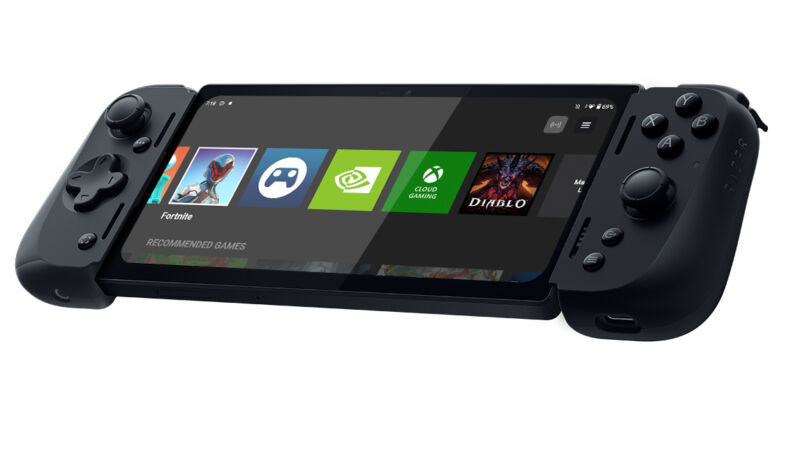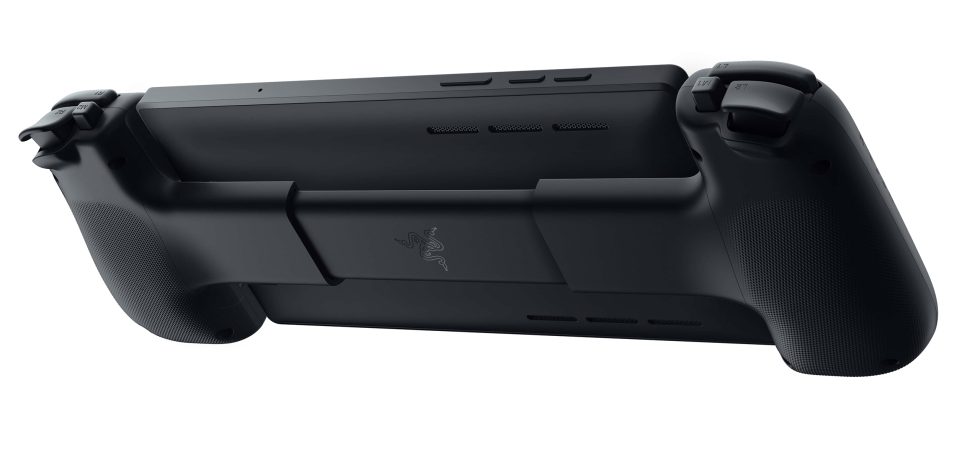$399 Razer Edge tries to make Android gaming tablets happen

After trying for years with gaming phones, the next big product category hardware manufacturers are trying to make happen is apparently "Android gaming tablets." You basically throw a Nintendo Switch into a photocopier, load Android on it, and hope users will be content picking through Android games and the growing (shrinking?) collection of cloud gaming services out there. Logitech kicked things off with the G Cloud Gaming Handheld last month, and now Razer is throwing its hat into the ring with a new Razer Edge handheld. This was teased last month and got a full unveiling over the weekend, and there are actually some interesting specs to go over.
First off, a major differentiator for Razer over the Logitech handheld is that the Razer has active cooling. Razer neglected to show any internal pictures, but the 10-mm-thick body and six vents on the back make it look like there's some decent heat dissipation going on. Even if Razer slapped a normal phone chip inside, a fan would probably make it outperform any phone, thanks to not having to instantly throttle. Razer and Qualcomm say this is the first device with a "Snapdragon G3x Gen 1 Gaming Platform" SoC, but that seems to just be marketing fluff rather than any new technical development.

The back, featuring a lot of cooling vents and shoulder buttons. (credit: Razer)
Qualcomm's page on the new G3x Gen 1 doesn't provide any technical details, a major red flag that suggests there's nothing here worth bragging about. Razer only says the chip runs at 3 GHz. Unofficially, we can pick through the Geekbench listings for some details. The chip codename "Lahaina" means this should be a rebranded Snapdragon 888 SoC, Qualcomm's flagship smartphone SoC from 2020. That would make it a 5 nm chip with one 3 GHz Cortex X1 core, three 2.42 GHz Cortex A78 cores, and four 1.8 GHz Cortex A55 cores. Those frequencies are all reported from Geekbench, and they're all normal compared to the phone version, meaning this chip didn't even get a frequency bump. Again, though, the phone chips throttle extremely quickly, so the fan should give this product decent sustained gaming performance not found on a phone. It seems like Qualcomm just didn't want to admit it's shipping a 2-year-old chip in this device.
Read 4 remaining paragraphs | Comments
from Tech – Ars Technica https://ift.tt/IlS1sbE
Comments
Post a Comment